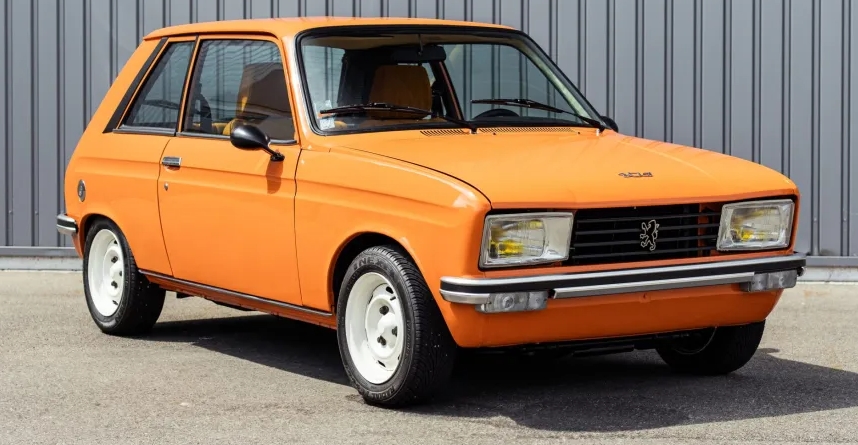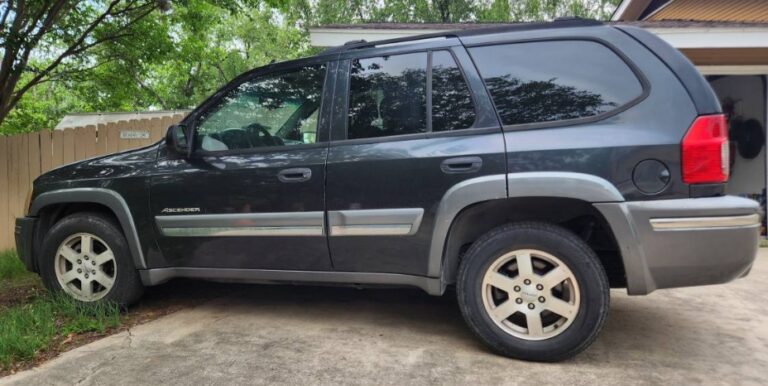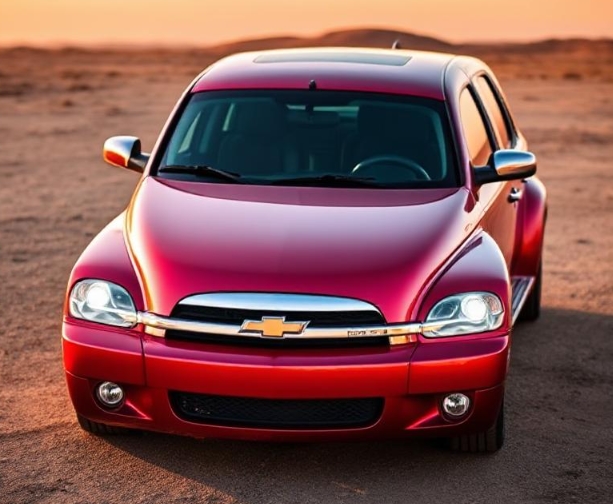The Evolution of the Peugeot 104, 106, and 107: A Comprehensive History
The Peugeot brand has a long-standing heritage in the automotive industry, renowned for producing practical, innovative, and affordable vehicles. Among its notable models are the Peugeot 104, 106, and 107—compact cars that played significant roles in Peugeot’s lineup during the late 20th and early 21st centuries. This article provides a comprehensive overview of the evolution of these models, including production years, model variants, trim levels, and notable features.
Peugeot 104 (1972–1988)
Introduction and Development
Launched in 1972, the Peugeot 104 was a small city car designed to compete in the burgeoning European compact market. It was developed in collaboration with the Italian automaker Fiat, sharing engineering principles and components—particularly with the Fiat 127—though it was a distinct model built under the Peugeot badge.
Production and Models
Produced from 1972 until 1988, the Peugeot 104 was assembled primarily in France, with some production in other European countries. The model underwent various updates during its lifespan, including facelifts and mechanical improvements.
Body Styles and Variants
- Saloon (Sedan): The original 104 was primarily offered as a two- or four-door sedan, catering to urban and suburban markets.
- Van/Utility: The 104 also had a commercial variant, the Peugeot 104 Van, which was popular for small business use.
- Estate/Wagon: A station wagon version, known as the Peugeot 104 Break, was available, offering increased cargo capacity.
Trim Levels and Features
Throughout its production, the Peugeot 104 was offered in various trim levels, which varied by market:
- Standard/Basic Models: Entry-level trims featuring minimal equipment, suitable for budget-conscious buyers.
- Luxe/GL/GLX: Mid-range trims that added comfort features such as improved upholstery, better instrumentation, and sometimes a higher-powered engine.
- S and Super S: Performance-oriented variants with minor engine upgrades, sportier styling cues, and additional features.
- GT and GTL: Higher-performance versions, often with more powerful engines, sportier aesthetics, and enhanced equipment.
Mechanical and Technical Specifications
- Engines: The Peugeot 104 initially launched with a 1.0-liter engine, with later versions featuring a 1.1L and 1.3L engine options. Diesel variants were also introduced, notably the 1.3L diesel.
- Transmission: 4-speed manual was standard, with some models offering a 5-speed manual.
- Suspension: Independent front suspension with rear beam axle.
Notable Updates and Facelifts
- Mid-1970s: Introduction of the 104 XS and other sportier trims.
- 1982: Facelift with updated front grille, bumpers, and interior improvements.
- 1986: The final phase of production, with minor cosmetic updates and the introduction of fuel-injected engines.
Legacy
The Peugeot 104 was praised for its simplicity, economy, and versatility. It sold well across Europe and paved the way for subsequent small Peugeot models, establishing a foundation for Peugeot’s small car strategy.
Peugeot 106 (1991–2003)
Introduction and Development
Replacing the Peugeot 104 and the Peugeot 205 in various markets, the Peugeot 106 was launched in 1991 as a modern, stylish supermini aimed at urban drivers and young consumers. It was developed as a global vehicle, with production primarily in France, and was designed to compete with models like the Renault Clio and Fiat Punto.
Production and Lifespan
Produced between 1991 and 2003, the Peugeot 106 underwent several updates and facelift phases during its lifecycle. It was built in France at the Peugeot Sochaux plant, with some assembly in other countries.
Body Styles and Variants
- Hatchback: The primary body style, offered in three and five-door configurations.
- Convertible: The Peugeot 106 Rallye and later the 106 S16 included a convertible variant, appealing to a youthful market.
- Van/Utility: A commercial van version, known as the Peugeot 106 Van, was available for small business use.
- GTI and Rallye: High-performance trims aimed at enthusiasts seeking sporty driving experiences.
Trim Levels and Features
The 106 was offered in a variety of trims, some of the most notable include:
- XL: Basic equipment, manual windows, minimal amenities.
- XT: Added features such as better interior trim, improved audio systems.
- XSi: Sportier trim with alloy wheels, sport seats, and decals.
- Gentry: More comfort-oriented with upgraded interior features.
- GT and GTI: High-performance trims with more powerful engines, sport-tuned suspensions, and distinctive styling.
- Rallye: Special edition models with unique decals, sportier suspension, and performance enhancements.
- S16: The top-tier sporty variant with a 1.6L engine, aggressive styling, and performance features.
Mechanical and Technical Specifications
- Engines: Ranged from 1.0L to 1.6L petrol engines, with some diesel options (notably 1.4L and 1.5L turbo diesel).
- Transmission: 5-speed manual was standard; some models offered an AMT or automatic options.
- Suspension: MacPherson struts at the front and torsion beam at the rear.
Notable Updates and Facelifts
- 1995: A significant facelift introduced new bumpers, lights, and interior updates.
- 1996: Introduction of the sporty S16 model.
- 2000: Minor cosmetic updates and the addition of new equipment levels.
- 2003: Discontinuation of the model, succeeded by the Peugeot 107.
Special Editions
Throughout its production, the Peugeot 106 saw numerous special editions, such as:
- Peugeot 106 Rallye: Focused on lightweight performance.
- XSi and S16: Performance-oriented variants.
- Furio and Roland Garros editions: Limited editions with unique styling and features.
Legacy
The 106 was highly successful, particularly in Europe, known for its agility, economy, and sporty variants. It was praised for its handling and was a popular choice among young drivers.
Peugeot 107 (2005–2014)
Introduction and Development
The Peugeot 107 was launched in 2005 as part of the “Bipper” family of small city cars, developed jointly with Toyota (as the Toyota Aygo) and Citroën (as the Citroën C1). It was designed to be an affordable, compact, and efficient urban car.
Production and Lifespan
Produced from 2005 until 2014, the Peugeot 107 was assembled at the Kolín plant in the Czech Republic. It represented Peugeot’s entry into the ultra-compact city car segment, emphasizing economy and practicality.
Body Styles and Variants
- Hatchback: The sole body style, offered in three-door and five-door configurations.
- Special Editions: Several limited editions with unique styling cues and features.
Trim Levels and Features
The 107 was offered in a relatively straightforward lineup:
- Urban: Base model with essential features.
- Active and Allure: Mid-level trims adding comfort, better interior materials, and convenience features.
- Sport and Sportium: Sportier styling cues and sometimes minor mechanical upgrades.
- Special Editions: Such as the “Feline” and “Roland Garros,” which added aesthetic enhancements.
Mechanical and Technical Specifications
- Engines: Powered primarily by small 1.0L and 1.4L petrol engines, with some markets offering a 1.0L diesel engine (e.g., 1.4 HDi).
- Transmission: 5-speed manual was standard; a 5-speed automated manual (Easytronic) was also available.
- Suspension: Independent MacPherson strut at the front, torsion beam at the rear.
Notable Updates
- 2008: Facelift introduced new front grille, headlights, and interior enhancements.
- 2010: Minor cosmetic updates and improved safety features.
- 2014: Discontinued and replaced by the Peugeot 108.
Safety and Features
The 107 was equipped with basic safety features, with higher trims offering ABS, airbags, and improved interior comfort. Its compact size made it ideal for city driving and parking.
Legacy
Although it was replaced by the Peugeot 108, the 107 was a popular city car, known for its affordability, reliability, and ease of driving. It appealed especially to urban dwellers and first-time car buyers.
.
MANY auto lovers not only spend time in their garages to tinker on their autos, but have other projects going on in there as well. Wood working is a popular pastime for the creative type of individual. Not sure what to make next? Or thinking about getting into this kind of hobby? There’s lots of possibilities… Here’s some of them…

.
Summary of Evolution
| Model | Production Years | Key Variants | Notable Features |
|---|---|---|---|
| Peugeot 104 | 1972–1988 | Sedan, Van, Estate, GT, GTL, S | Shared platform with Fiat 127, mechanical simplicity, versatile variants |
| Peugeot 106 | 1991–2003 | Hatchback (3/5-door), GT, GTI, Rallye, S16 | Sporty trims, extensive special editions, handling focused |
| Peugeot 107 | 2005–2014 | 3/5-door hatchbacks | Ultra-compact city car, economical, joint development with Toyota |
Conclusion
The Peugeot 104, 106, and 107 represent significant chapters in Peugeot’s history, reflecting shifts in automotive design, technology, and market preferences. The 104 laid the groundwork as a practical and economical small car in the 1970s. The 106 built upon this foundation, introducing sporty variants and modern styling in the 1990s. Finally, the 107 exemplified the move toward ultra-compact urban mobility solutions in the 2000s.
Each model showcased Peugeot’s ability to adapt to changing consumer demands—be it affordability, style, or efficiency—and remains a testament to the brand’s commitment to producing practical, accessible vehicles for a broad audience.







